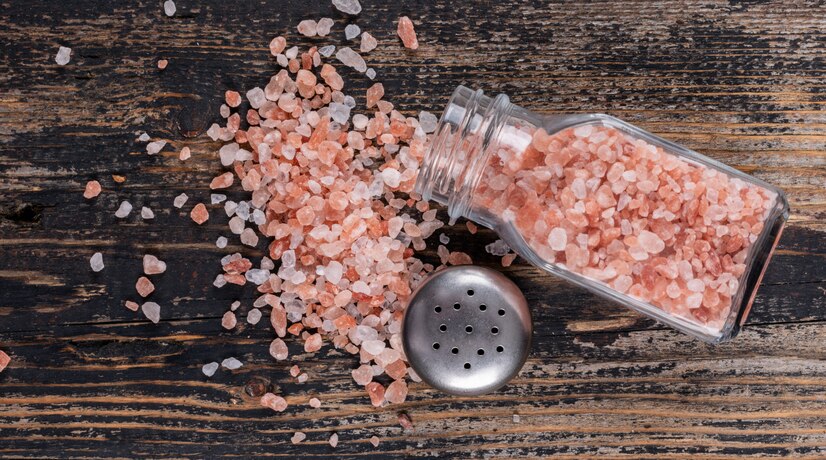Iodized vs. Non-iodized Salt: Unveiling the Mystery of Himalayan Salt and Iodine

Salt is a common ingredient in cuisines all around the world because of its ability to enhance flavors and transform food. Because it contains minerals like sodium and iodine, salt is not only essential for food preparation but also for overall health. However, the debate over iodized versus non-iodized salt raises concerns about the real iodine content of different types of salt, such as the well-known Himalayan salt. The differences between iodized and non-iodized salt, the function of iodine in nutrition, and the mystery surrounding the iodine content of Himalayan salt will all be covered in this extensive study.
The Burning Question: Does Himalayan Salt Contain Iodine?
For those seeking a source of iodine in their salt, the answer is no. Himalayan salt, revered for its distinctive pink hue and extracted from the ancient Himalayan mountains, stands out for its minimal processing. This unique approach allows it to retain its natural mineral composition, excluding any added iodine. Unlike its counterpart, table salt, which undergoes extensive refining and often receives an iodine boost, Himalayan salt remains in its original state, meaning it lacks the additional iodine found in iodized varieties.
Delving Deeper: Understanding the Discrepancy The key to understanding this difference lies in the processing methods employed. Table salt undergoes a rigorous refining process, stripping away most of its natural minerals. Iodization, the act of adding iodine to salt, is then typically implemented as a public health measure to address potential iodine deficiencies within the population. This practice began in the early 20th century when scientists discovered a link between iodine deficiency and goiter, a condition characterized by an enlarged thyroid gland.
Himalayan salt, in contrast, embraces a minimalist approach.
It undergoes minimal processing, allowing its inherent mineral profile, which includes trace amounts of naturally occurring iodine, to remain intact. However, it’s crucial to note that the amount of iodine present in Himalayan salt is significantly lower compared to its iodized counterpart. Studies
reveal that iodized table salt can contain up to 400 times more iodine than Himalayan salt. Points to Ponder: Weighing the Pros and Cons The Importance of Iodine: Iodine is an essential mineral that plays a critical role in maintaining healthy thyroid function. It is crucial for regulating metabolism, growth, and development, and deficiencies can lead to a multitude of health concerns, including Goiter: As mentioned earlier, an enlarged thyroid gland is a hallmark symptom of iodine deficiency. Fatigue: Feeling constantly drained and lacking energy is a common complaint among individuals with iodine deficiencies. Cognitive Impairments: Studies suggest that severe iodine deficiency can negatively impact cognitive development and learning in children and even affect memory in adults. Iodized salt plays a crucial role in preventing these deficiencies by providing a readily available source of iodine in our diet. Public health authorities around the world recommend consuming iodized salt to ensure adequate iodine intake, especially for pregnant and breastfeeding women, infants, and young children.
A Spectrum of Minerals:
- While Himalayan salt lacks the added iodine of its iodized counterpart, it boasts a distinctive mineral profile. It contains trace amounts of various minerals, such as:
- Calcium: This mineral is essential for strong bones and teeth.
- Magnesium: Crucial for muscle function, energy production, and a healthy nervous system.
- Potassium: Plays a vital role in regulating blood pressure and maintaining healthy fluid balance in the body.
- Iron: Essential for transporting oxygen throughout the body and supporting healthy red blood cell production.
However, it’s important to remember that the health benefits associated with these trace minerals, considering their minute quantities in Himalayan salt, are not definitively established by scientific evidence. While some proponents of Himalayan salt claim that these trace minerals contribute to its superior health benefits, these claims lack strong scientific backing.
- Moderation is Paramount: Regardless of the type of salt you choose, moderation is key. The American Heart Association recommends limiting daily sodium intake to no more than 2,300 milligrams (mg), ideally aiming for less than 1,500 mg for individuals with specific health conditions, such as high blood pressure, heart disease, or kidney disease. Excessive sodium intake can contribute to these health concerns, so it’s important to be mindful of your overall sodium consumption, regardless of the source.
Choosing Your Salt Wisely: A Balancing Act
The decision between iodized and non-iodized salt hinges on your individual needs and dietary considerations.
If you are at risk of iodine deficiency, consulting with your healthcare professional is paramount. They can assess your individual risk factors and recommend whether iodized salt should be a mainstay in your diet.
For individuals who are not iodine deficient and prioritize a minimally processed product with trace minerals, Himalayan salt might be a suitable alternative. However, it’s essential to remember
In the world of salt, understanding the differences between iodized and non-iodized varieties is crucial. While familiar table salt undergoes extensive processing and receives added iodine for public health reasons, Himalayan salt remains minimally processed, retaining its natural mineral profile, including trace amounts of iodine. However, this iodine content is significantly lower compared to iodized salt.The choice between these salts depends on individual needs. Those at risk of iodine deficiency should prioritize iodized salt, while those seeking a minimally processed product with trace minerals might consider Himalayan salt as an alternative, remembering to prioritize moderation in overall sodium intake. Consulting a healthcare professional for personalized guidance is always recommended


